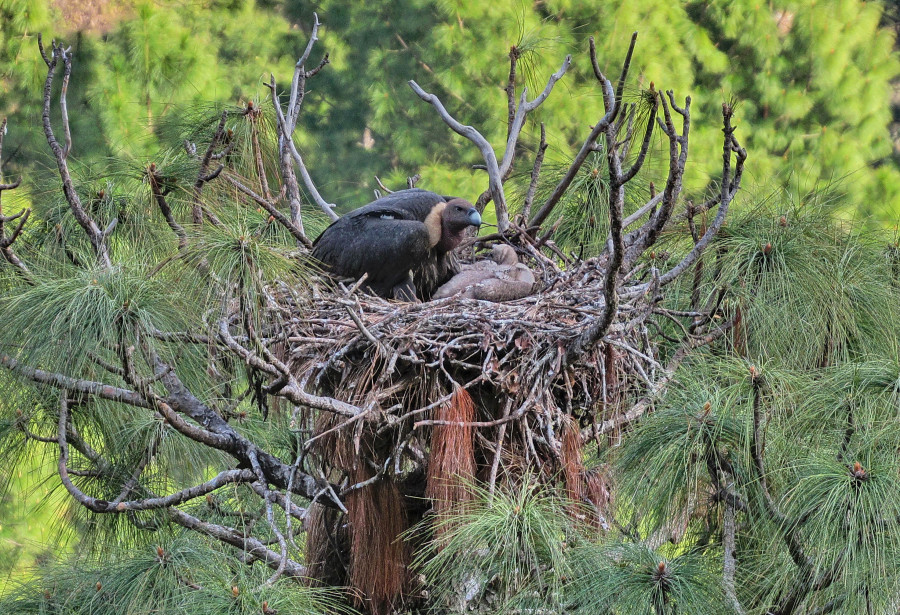Editorial
El condor's friends
Vultures play a significant role in our ecosystem.
In September last year, there was an exciting development for bird lovers when conservationists spotted a red-headed vulture nest in Kanchanpur. Of the nine vulture species confirmed in Nepal, four species—red-headed vulture, white-rumped vulture, slender-billed vulture and Indian vulture—are critically endangered while the Egyptian vulture is listed as endangered. Three other species—bearded vulture, cinereous vulture and Himalayan griffon—are listed as near threatened by the International Union for Conservation of Nature.
According to ornithologists, the population of various vulture species in the country was estimated at 1.6 million in the early 1980s, but in the decade and a half that followed, the population of these abundantly found large birds of prey declined by a shocking 99 percent. The cause of this decline, investigators say, is directly linked to a veterinary drug, diclofenac, the residue of which was traced in the carcasses of cattle consumed by the vultures. It turned out the birds suffered from kidney failure and death after a single feeding on contaminated carcasses, decimating their population to near extinction.
Nepal eventually banned the drug in 2006 and pioneered a community-led conservation model, following which the country has witnessed a remarkable recovery of the raptors. There are now vulture safe zones, a breeding centre and even vulture restaurants that provide uncontaminated meat, and studies show that these efforts have gradually increased their population since 2013.
Conservationists have recorded an increase in the number of nesting birds in vulture safe zones. Flocks of vultures in the hundreds visit the Jatayu Restaurant, an ingenious idea that is now being replicated globally. The vulture breeding centre in Chitwan National Park has also been lauded for successfully releasing captive-bred vultures into the wild, which have been tracked as far away as Pakistan.
The return of the raptors tells us that we are headed in the right direction with our conservation efforts, but there’s a long way to go before we start seeing a thriving population of the majestic birds. According to Bird Conservation Nepal, there are some 15,000 to 20,000 vultures today, and studies show that there is a positive trend of recovery in Nepal, but threats remain.
On Wednesday, as many as 67 vultures of various species were found dead near a pond in Nawalparasi (West)—33 white-rumped, 31 Himalayan Griffon, two cinereous vultures and one slender-billed vulture. One Himalayan griffon, which was found ailing in the area, is currently undergoing treatment. A preliminary investigation showed that the vultures died after feeding on the carcasses of dogs that could have been poisoned to death.
This is an enormous loss for Nepal’s vulture conservation, and conservationists fear more could be found dead in other places. While officials must investigate the incident and hold those responsible accountable, there are lessons for us to ensure that these critically threatened birds are protected. As we have witnessed in the past, a single feeding on contaminated carrion can kill the birds.
Our ongoing conservation efforts must be complemented by effective awareness campaigns, especially in areas near vulture safe zones. People need to be sensitised about vulture conservation because their plight will eventually pose bigger risks. Vultures, conservationists say, travel as far as 100 km or longer in search of food and play a significant role in our ecosystem as they feed on putrid carcasses that could spread deadly pathogens. We cannot overlook the importance of these magnificent birds.




 8.12°C Kathmandu
8.12°C Kathmandu












%20(1).jpg&w=300&height=200)

